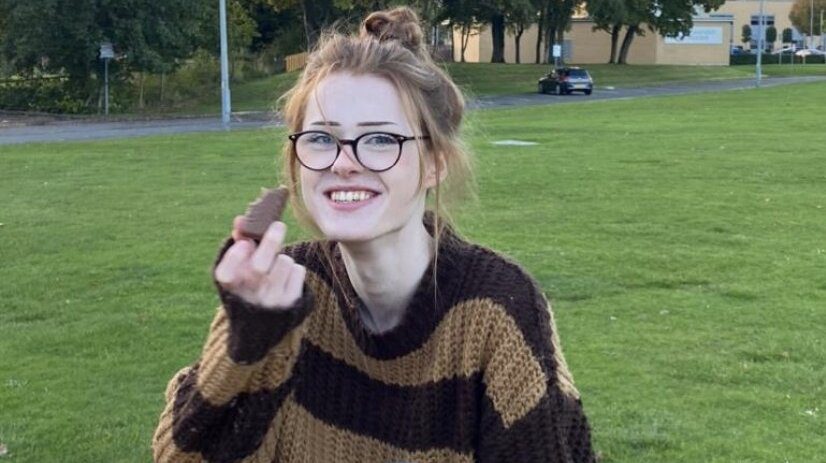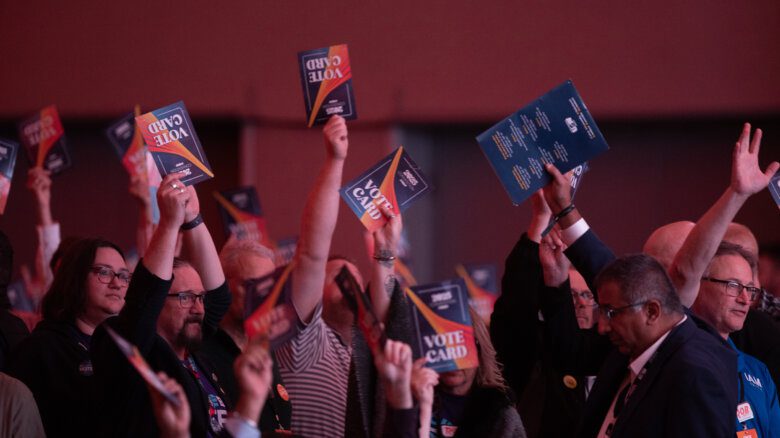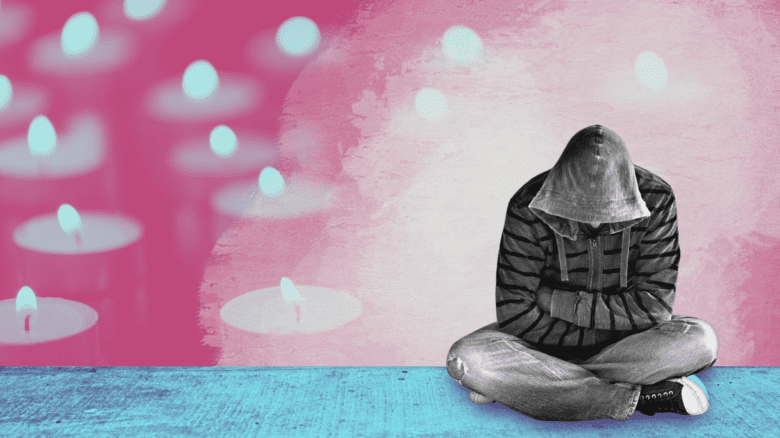In February, two 16-year-olds were sentenced to a minimum of 20 years in prison for the brutal murder of British trans teen Brianna Ghey, an act Judge Amanda Yip described as partly motivated by “hostility […] because of her transgender identity.” Six days after the sentencing, U.K. prime minister Rishi Sunak made a transphobic joke in the Houses of Parliament while Brianna’s mother, Esther Ghey, was present. In that same week, another teenage trans girl was “subjected to slurs” and stabbed 14 times at a party in London (she survived).
“We have seen a concerted attempt by the media to erase the role of transphobia in Brianna’s death,” Jess O’Thomson, a key reporter on Brianna’s trial, tells Xtra. In the months prior to the verdict in Brianna’s case, article after article had dismissed transphobia as a factor in her murder. The court’s insistence on Brianna’s murder as transphobic, and the widespread grief at her death, should be a crisis point for U.K. media and its sustained, years-long onslaught on trans life and dignity. Predictably, however, U.K. newspapers are chasing a narrative that exonerates them.
“Brianna was addicted to social media—teenagers need to be protected from smartphones,” reads the headline of an Independent exclusive interview with Esther Ghey. The BBC, The Guardian, the Daily Mail and the Telegraph are united in focusing on Esther’s desire for “mindfulness in schools and stronger online safety.” Esther argues that Brianna’s “obsession” with being online made her more anxious and vulnerable to danger, as well as that violent material Brianna’s killers accessed online contributed to their actions. She is now advocating for specific parentally monitored “children’s phones”—with total surveillance and no social media—to be manufactured for British children under 16.
Of course, time spent on the internet can affect mental health, and children can encounter bullying, hostility and harmful influences online. Inadequately moderated online platforms are a serious problem. But Brianna was an isolated, bullied trans child, more endangered within her real-life environment than her online one—her “inclusivity unit” classes for vulnerable students were where she met her killers. Her vulnerability was inextricable from her position as a trans child.
Giving trans kids social media may cause them problems, but taking it away, in many cases, amounts to making them unable to transition—and removing their access to community.
British minors lack almost any access to state transition care in the U.K., and the 2023 Conservative Party Conference was dominated by hostility toward trans women. Whatever lip service Brianna’s government and culture pay to her beauty now, they aggressively opposed her living as herself in practice. It was online, on TikTok, where Brianna and her peers shared information on how to transition. “She’d help younger trans women to safely and legally access hormones, advising them about private doctors,” an online friend of Brianna’s told VICE. Giving trans kids social media may cause them problems, but taking it away, in many cases, amounts to making them unable to transition—and removing their access to community.
“Anti-social-media policy proposes to pay for the burden of safeguarding by directly taking rights and access away from young people,” says Mallory Moore, journalist and researcher for Trans Safety Network. “There’s a lack of recognition of the hostile environment that government, media and platform owners have fostered,” Moore tells Xtra, citing X’s decision to replatform “violent hate propaganda” after being acquired by Elon Musk. “There’s also little recognition of how important peer-to-peer content created outside of that hostility is for children.”
A rare instance of publicly acknowledged mourning at trans death is being diverted into a greater demand for control over other children like Brianna. But Brianna and her friends were fighting against a slow, crushing system of governmental persecution, committed through medical and organizational policy, media disinformation and guidance for schools as much as through overt hatred and violence.
The immense cruelty trans people experience is visible in both the conditions that lead to trans death, and in its aftermath. Trans Oklahoma student Nex Benedict’s death last month is inextricable from his school’s and state’s overtly anti-trans climate, the targeting of a pro-trans teacher within his school by fascist propaganda accounts Libs of TikTok, and the furor over gendered bathrooms. Trans people are over four times more likely than cis people to be victims of violent crime, and are made vulnerable to violence by lacking or losing forms of social support. Disownment by family, poverty, homelessness, racist and homophobic policing and the stigmatization of sex work hastens the death of many trans people, particularly Black and transfeminine trans people. But the same outlets that purport to memorialize the dead further anti-trans cruelty through mass misgendering and/or deadnaming, from California high school student Latisha King in 2008 to Downpatrick tattoo artist Zen Black in 2023. (Benedict was also initially deadnamed in his obituary; his mother has since apologized.)
Death, like childhood, can smother transness—the dead person’s life and wishes can be quietly censored by relatives who preferred them cis.
When someone dies, their family and their government is given authority over their memory. Even for adults, the connections and relationships and practices that populate a trans life are rarely taken seriously once the person who fought for them is dead. Death, like childhood, can smother transness—the dead person’s life and wishes can be quietly censored by relatives who preferred them cis. Adults have some limited access to the tools of the state to legitimize ourselves and our ties with a Gender Recognition Certificate, changed documents, a marriage. Children do not when a parent denies consent.
The limitation of social media use for children would remove access to one of the few ways trans children secure their own histories—in both life and death—and to a potential source of connection and well-being. It would also locate children’s salvation in the same body of law, policy, policing and media that maintains this vast mass of cruelty; in the same content filters that already filter out LGBTQ+ content as too “adult” for children. Meanwhile, as O’Thomson notes, the difficulty of securing transness stands in stark contrast to the ease of disseminating transphobia: for all the content blocks in the world, all Brianna’s murder took to plan was access to “simple text messaging.”
Esther Ghey respected and affirmed her child’s gender identity in life and death, but even among loving parents she is more the exception than the rule. No parent can protect the memory of their trans child from a press hungry to demean them. When Brianna died, The Times edited an article to include her deadname once it had been leaked. It was reported that Brianna had been out as trans for a few months, when she had actually been out for over two years.
Brianna’s legacy on social media, and her network of online friendships with other trans girls, helped counter misinformation about her. It is a tragedy that social media is one of the only spaces in which trans children are allowed to speak for themselves—the solution to transphobic murders is not to restrict that access. For many of us, keeping our transness from being both violently and casually crushed by family, peers and media is a war, and for nobody is this true more than for trans children.
Esther Ghey’s policy recommendations are inextricable from her position as a mother who allowed her daughter to transition, a role that has been directly impugned as child abuse through newspapers, divorce courts and in the rulings of U.K. social services. The anti-trans campaigners more willing to appear extreme have levelled this charge at Esther Ghey herself. Kellie-Jay Keen (better known as Posie Parker) responded to a post on X discussing Brianna’s murder simply by saying “Women who enable the transition of their children are evil.” An UnHerd writer on X called Brianna a “gay boy [sic] who was clearly extremely online,” and alleged that Brianna must have been “groomed,” because she was “dressing in a highly sexualized way.”
In this narrative, stricter parenting would have saved Brianna. It is a victim-blaming story that vindicates the mechanisms of transphobia, at the expense of everything unusually good, kind and moral about Esther Ghey’s relationship with her daughter. There is very little that parents of trans children can advocate for that will not result in them, and their children, being smeared. But we can still refuse those parents’ guilt.
The energy and unease built up around Brianna’s death could be used for a serious reckoning with how transphobic media rhetoric in the U.K. may inculcate transphobic violence. Instead, U.K. media outlets are redirecting that energy into supporting more surveillance, more policing and more limits on children’s autonomy. Regardless of if the call for an official “children’s phone” is taken up—and much of the surveillance software that would do such a job already exists—we must oppose policy suggestions that, in the pursuit of avoiding harm, reskin other forms of harm as “care.”
Trans children are being attacked by their peers in public parks, beaten in school buildings, kicked out of quiet family homes. To continue to focus on “online” as the primary target of reform locates the problem not with transphobia, but with trans children themselves. We can address and mitigate harm if we recognize it as such, but we cannot talk about Brianna and her legacy without recognizing that being separated from her trans community online would have directly harmed her.



 Why you can trust Xtra
Why you can trust Xtra


